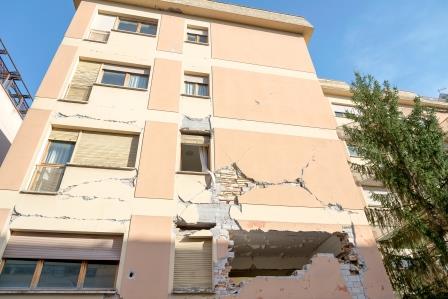

In this Edition
Construction
Management Specialists
111 Pine Street, Suite 1315
San Francisco, CA 94111
(415) 981-9430 (San Francisco office)
6518 Lonetree Blvd., Suite 164
Rocklin, CA 95765
(916) 742-1770 (Sacramento office)
9449 Balboa Avenue, Suite 270
San Diego, CA 92123
(619) 518-5648 (San Diego office)
8538 173rd Avenue NE
Redmond, WA 98052
(206) 571-0128 (Seattle office)
2063 Grant Road
Los Altos, CA 94024
(650) 386-1728 (South Bay office)
7083 Hollywood Blvd., 4th Floor
Los Angeles, CA 90028
(424) 343-2652 (Los Angeles, CA office)
78 Heathervue, Greystones
Wicklow, A63Y997, Ireland
+353 86-600-1352 (Europe office)
www.TBDconsultants.com
Worldwide, the greatest number of deaths from natural disasters have resulted from earthquakes, and mostly from failures in buildings and other structures. The USRC (US Resiliency Council) is trying to address that issue by establishing a rating system for buildings, depending on how they are likely to behave in an earthquake. The idea is meant to be similar to that of a LEED rating, and encourage building owners to make their building more attractive to potential tenants or purchasers. Unfortunately, while showing that a building is ecologically friendly can give a warm fuzzy feeling to owners or potential buyers, reminding people of potential dangers can send a cold shudder through them. But the goals of the USRC are nevertheless laudable.

Their system rates buildings in relation to safety, repair cost (amount of damage), and the time needed to achieve functional recovery, and in each category a rating of between one and five stars is given. In the safety category, three stars would be equivalent to saying the building was up to current code, meaning that loss of life in a major earthquake would be unlikely. It would not mean the building would necessary be useful afterwards. One star would mean that loss of life was likely throughout the building. A five star safety rating indicates that injuries would be unlikely because, while the building may not escape totally unscathed, it will largely still be functional.
In the Damage category, five stars means repair costs after a major earthquake should be less than 5% of the replacement cost. One star indicates there's likely to be severe damage that would cost more than 40% of the replacement cost. In the Recovery category, five stars means the building should be immediately available for occupation, or at least within a matter of days. With a one star building it could take over a year, if ever, before the building is able to be occupied again.
Their rating system also uses Platinum, Gold, Silver, and Bronze classifications, similar to LEED. To achieve Platinum, a building would need to achieve a five star rating in each of the Safety, Damage, and Recovery categories. Gold means at least four stars in each, Silver three, and Bronze means three for Safety and at least two stars for the other two categories.

USRC ratings can be either Verified or Transactional. A Verified Earthquake Rating involves a full technical review, and it is this rating that a building owner is allowed to use in marketing material or display on the building (perhaps alongside the LEED rating). A Transactional Earthquake Rating is less rigorous in the review process, can only result in a rating of three stars at most, and cannot be used in advertising. However, it can be used for assessing risks involved with the building, and can be useful information for potential investors, etc.
How soon even a five star rated building could be brought back into use does not depend completely on how well the building performs in an earthquake, but also on how well the services, such as water supply, power, and communications, have fared. Local authorities are trying to address these issues, because rapid recovery is also important to the economy of the area.

The Northridge earthquake struck at about 4.30 a.m. on Monday, January 17, 1994. At a moment magnitude of 6.7 it was by no means the largest earthquake that the area could expect. Nevertheless, it damaged buildings up to 85 miles from the center, with the usual suspects (soft-story apartment building, unreinforced masonry, and non-ductile reinforced concrete buildings) being hit particularly hard. Major freeways and other roads were cut, and electricity went out over a large area. Water pressure dropped to zero in many areas, affecting the ability to fight the inevitable fires, and drinking water wasn't restored to many areas for about a week.
Earthquakes are certainly not the only types of disasters that can affect buildings. As an example, some are predicting that Hurricane Harvey will go down as the most expensive natural disaster in US history at over $190 billion (as compared with $160 billion for hurricane Katrina as estimated by The National Oceanic and Atmospheric Administration). The USRC is aiming at extending its rating system to cover things like hurricanes, tornadoes, floods, and blasts.
Ransomware is the latest type of malware to make the news, and attacks are growing. In this article we look at ways to plan for building resilience into your computer networks.
The current bull market has been running for over eight years, which is remarkable in itself, but especially so considering all the uncertainties that have been plaguing us in the political and international fields. In this article we look at the resilient economy, with its strong corporate revenues, that has been driving the market.
Design consultant: Katie Levine of Vallance, Inc.